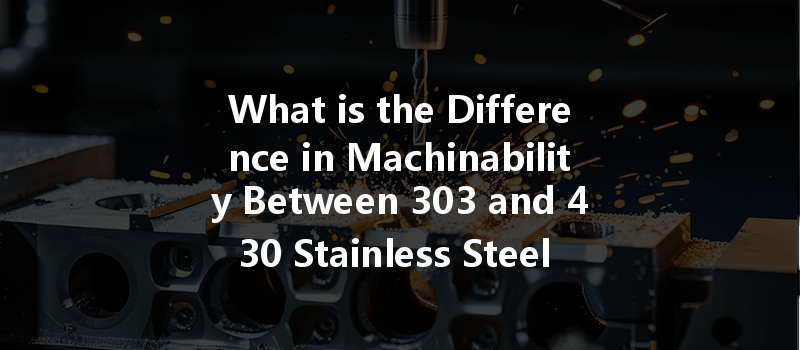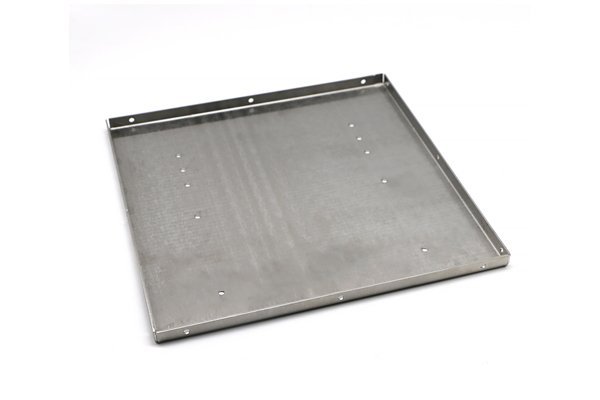Did you know that stainless steel is one of the most widely used materials in manufacturing, accounting for approximately 25 million tons of raw steel produced each year? With various grades available, each exhibiting different mechanical properties, corrosion resistance, and machinability, understanding the intricacies of these materials is crucial for CNC machinists and manufacturers. Among these grades, 303 and 430 stainless steels stand out for their distinct characteristics and applications. This blog aims to explore the differences in machinability between these two alloys, diving deep into their properties, various machining techniques, and how to achieve optimal performance.
—
1.1 Overview of Stainless Steel
Stainless steel is recognized for its high resistance to corrosion and staining, making it an ideal choice in various industries—from medical tools, and kitchen equipment to aerospace components. Composed mainly of iron, chromium, and other alloying elements, these variations provide diverse physical and chemical properties.
1.2 Importance of Machinability
Machinability refers to how easily a material can be cut or shaped using machining operations. High machinability implies lower production costs, higher quality parts, and efficient workflows. An understanding of the following details can enhance the efficiency of using stainless steels in CNC turning processes and truly maximize the capabilities of both 303 and 430 grades.
2.1 Composition and Properties
303 stainless steel is an austenitic grade that contains around 18% chromium and 8% nickel, with a maximum of 0.15% sulfur added to improve machinability. The presence of sulfur acts to reduce friction at the cutting edge, making it more amenable to machining. It also possesses excellent corrosion resistance and is non-magnetic in nature.
2.2 Machinability Characteristics
303 stainless steel has exceptional machinability, scoring a 100% rating on the machinability index. This increased machinability means machinists can achieve higher speeds and feeds and employ less wear on tooling. However, due to its work-hardening nature, care must be taken to select appropriate tooling and coolant to maintain optimal performance.
2.3 Applications
Common applications for 303 stainless steel include gears, shafts, and various precision components in industries such as automotive, aerospace, and medical.
3.1 Composition and Properties
Conversely, 430 stainless steel is a ferritic grade composed of roughly 17% chromium and minimal nickel. This grade provides moderate corrosion resistance and is magnetic. Its lower alloy content translates into lower costs, making it attractive for budget-sensitive projects.
3.2 Machinability Characteristics
Machinability for 430 stainless steel is rated at approximately 55% compared to

3.3 Applications
Typical applications for 430 stainless steel include automotive parts, kitchen appliances, and other decorative items where aesthetic appeal is important.
To make informed decisions about which stainless steel to use, a detailed comparison of the machinability between 303 and 430 is essential.
4.1 Tooling Selection
Given the drastic difference in machinability, selecting the right tooling is critical. For 303, high-speed steel (HSS) or carbide tools with a geometry suited to non-ferrous metals are ideal. For 430, tougher tools with robust cutting edges are essential to divide the material efficiently while minimizing wear.
4.2 Cutting Speeds and Feeds
Optimal cutting speeds for 303 stainless steel can range from 80 to 200 SFM (Surface Feet per Minute), with feeds between 0.003 and 0.025 inches per revolution. On the other hand, 430 stainless requires slower speeds, typically between 45 and 100 SFM, with similar feed ranges.
4.3 Surface Finish
303 results in better surface finishes due to its excellent machinability. In contrast, 430 requires additional finishing processes to achieve comparable aesthetic qualities, which adds to overall production costs.
4.4 Tool Wear
Tool wear tends to be more significant with 430 stainless steel, contributing to increased downtime and operational costs. With 303, on the other hand, the tool wear can be managed effectively with appropriate coolant application and cutting parameters.
Knowing how to handle each material specifically can greatly improve productivity and quality outcomes.
5.1 Techniques for Machining 303 Stainless Steel
5.2 Techniques for Machining 430 Stainless Steel
Machining stainless steel is not without its challenges. Identifying common issues can help in developing strategies to address them.
6.1 Common Issues Faced
6.2 Solutions and Recommendations
7.1 Industry Examples
Numerous industries have successfully navigated the challenges posed by different stainless steel grades. For instance, a prominent manufacturer in the automotive sector adopted 303 stainless steel for its engine components due to its superior machinability and part consistency.
Conversely, a kitchen appliance fabricant switched to 430 due to its cost-effectiveness for decorative parts where strength was less of a concern, highlighting the importance of aligning material properties with application requirements.
7.2 Lessons Learned
These case studies show that careful selection of machining materials not only impacts product performance but has significant economic implications. Understanding properties and machining techniques can make all the difference in attaining success.
When it comes down to it, selecting between 303 and 430 stainless steel for CNC turning should greatly depend on the precise application, required mechanical properties, and budgetary constraints. This blog has explored critical aspects of machinability between these two materials, focusing on tooling, cutting parameters, and the importance of understanding mechanical properties.
Recognizing the differences can aid manufacturers in making informed decisions, optimizing their processes, and ultimately increasing profitability. Stainless steels play a crucial role across countless industries, and mastering their machinability intricacies will ensure products are not just functional but excel in quality and performance.
As you contemplate the choice between these two alloys for your next machining project, consider the insights provided here, and remember: the right material choice makes all the difference!






